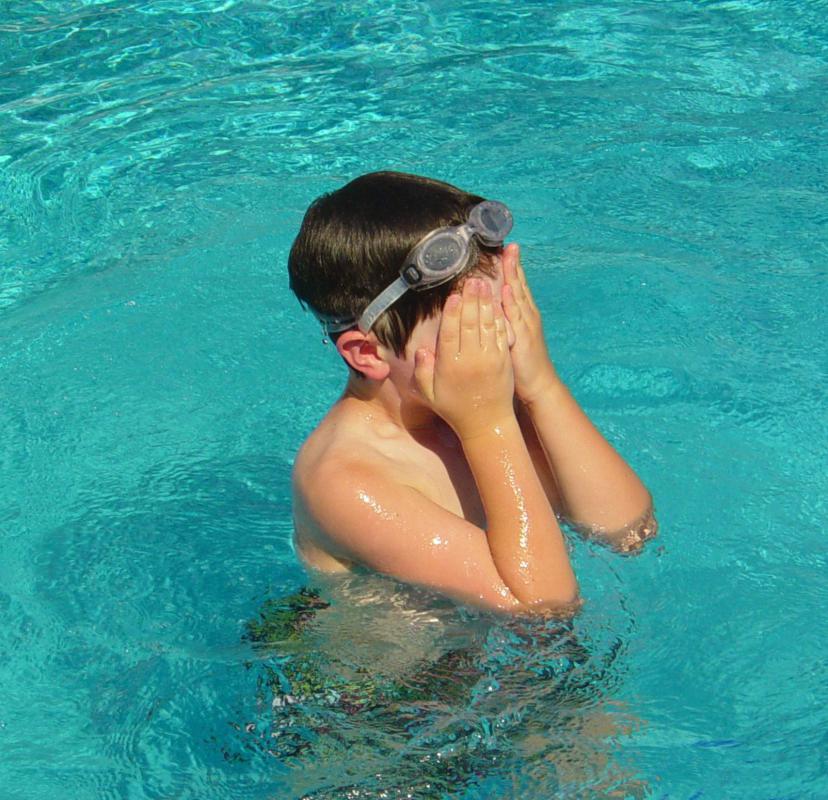At TheHealthBoard, we're committed to delivering accurate, trustworthy information. Our expert-authored content is rigorously fact-checked and sourced from credible authorities. Discover how we uphold the highest standards in providing you with reliable knowledge.
What is a Chlorine Rash?
A chlorine rash is a type of skin rash that usually develops after a person has been exposed to chlorine. Sometimes, the condition is referred to as a swimming pool rash, as people frequently come down with the ailment after being in a swimming pool. Generally, the rash will develop not long after coming in contact with the chlorinated water. The first sign of the rash is usually bothersome itching. In most cases, the rash will clear up within a few days.
Usually, chlorine is put into water that will be inhabited by several people. For this reason, it is typically put into public swimming pools, hot tubs and water in water parks. It is commonly used as a disinfectant to kill bacteria that may grow in these heavily populated waters. For most people, being exposed to chlorine in small amounts is not harmful, however, for others even a minimal amount of exposure to the chemical may cause an allergic rash to develop. An individual who develops a chlorine rash may be said to have a chlorine allergy.

Extreme itching is generally the foremost symptom of a chlorine rash. The itching may start within minutes of being exposed or it may develop over the course of several hours up to a day after coming into contact with chlorine. Most people will find small bumps aligning on their skin. The bumps may be formed into patches on several places over the body. The affected areas may also be red and swollen, which may cause a great deal of pain.

There are some steps that may be taken to prevent a chlorine rash. If swimming in a public pool and a person is severely allergic to chlorine, it may be a good idea to ask the managers or the keeper of the pool about the level of chlorine the pool contains. After swimming, a person should remove his or her swimsuit immediately to limit the amount of exposure to chlorine. Additionally, it may also be helpful to bathe both before and after entering water containing chlorine.

To treat a chlorine rash, a person may purchase an over-the-counter cream or ointment. Most creams for this type of skin irritation may contain corticosteroids. Additionally, an anti-itch ointment may provide some relief to the constant itching, which may be one of the most problematic symptoms of the rash. Until the rash runs it course, an infected person should bathe with antibacterial soap and keep the irritated areas as clean and dry as possible. If the rash fails to heal with a few days or if the person develops more serious symptoms, such as fever, spreading of the rash, a change in its color or oozing of the rash, a health care professional should be sought for proper treatment.
AS FEATURED ON:
AS FEATURED ON:
















Discussion Comments
I am allergic to chlorine and this article helped enormously. Thank you!
An additional way to minimize exposure is to use a chlorine neutralizing rinse like swimspray after swimming. Chlorine chemically binds to skin and hair, so neutralizing those bonds is necessary if you want to remove all the chlorine residue.
Post your comments